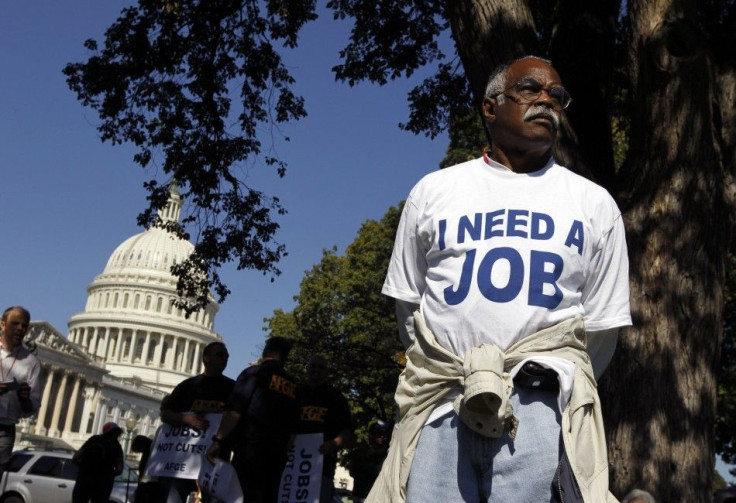10 Worst Cities for Finding a Job: Correlations Between Unemployment, Housing Market

U.S. News released its 10 worst cities for finding a job and flagrant similarities appeared between cities' job markets and real estate markets. The cities where housing prices remain depressed directly correlate to the cities with the worst employment problems.
The biggest single thing [contributing to high regional unemployment] is the housing boom and bust. says Jim Diffley, chief regional economist at IHS Global Insight.
Seven California cities are among the top 10 worst cities for finding a job. California was a state hit hard by the burst of the housing bubble. Prices were high when real estate was flush, but once the bubble burst it became clear many of those who purchased homes could not actually afford them.
Not only is [the housing sector] taken away, but the people left behind ... have incredibly high mortgages, a lot of foreclosure activity, and the whole concept of household wealth has been shot because of their home equity values, Diffley said of the aftermath of the housing crash in states like California, Florida and Arizona.
In a report released this week, by the United States Conference of Mayors and IHA Global Insight titled U.S. Metro Economies, data shows that the housing market in multiple job-depressed cities continued to suffer in 2011.
Home prices in Merced, Calif., the No. 1 worst city for finding a job, dropped lower than any other city between Q4 2010 and the Q4 2011, falling from $101,076 to $81,379 with a drop of 19.5 percent.
Here are the 10 worst cities for finding a job:
Metro Area
Unemployment Rate, Nov. 2011
Y-Y Change
1. Merced, Calif.
16.9
-1.7
2. Fresno, Calif.
15.7
-1.7
3. Modesto, Calif.
15.5
-1.7
4. Stockton, Calif.
15.5
-2.3
5. Visalia-Porterville, Calif.
15
-1.8
6. Atlantic City-Hammonton, N.J.
12.4
0.1
7. Bakersfield-Delano, Calif.
13.4
-2.2
8. Hickory-Lenoir-Morganton, N.C.
11.7
-0.7
9. Riverside-San Bernardino-Ontario, Calif.
12.5
-2.0
10. Brownsville-Harlingen, Texas
11.2
-0.5
Sources: Bureau of Labor Statistics, U.S. Census Bureau.
Methodology: For each metropolitan area, the percentage change in unemployment rate from Nov. 2010 to Nov. 2011 was determined. That percentage change was then subtracted from a given city's Nov. 2011 unemployment rate. For example, Fargo's unemployment rate fell by nearly 14 percent year over year. 14 percent was then subtracted from its Nov. 2011 unemployment rate. The above cities are the 10 with the highest resultant figures.
A previous article by U.S. News, shows that unemployment fell sharply in November amongst young adults 25- to 34-years-old, but continues to hover at 9 percent. Since they were hit hard during the recession, many young adults chose to live with their parents and hold off on home-owning. Demand in the housing market dwindled.
But there is still some glimmer of hope.
[This age group] is very important for future housing demand, Jed Kolko, chief economist at real estate Web site Trulia.com, told U.S. News. When their economic prospects improve we will see more new household formation and more demand both for rental and owner occupied.
And, on the flipside, regions that have suffered price declines offer affordable property. This can prove to attract business and jobs.
They are cheaper places for business to operate, Kolko says. With real estate prices having fallen so much-more in these places than in others-there's a relative cost advantage for businesses that are looking for less expensive locations for themselves and for their workers.
© Copyright IBTimes 2024. All rights reserved.





















